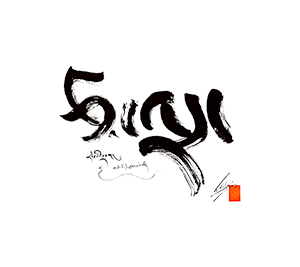... read more at

Philosophical positions of this person
He accepts a pure nature that is the five wisdom's which are possessed, but obscured in sentient beings, but in terms of buddha-nature as a seed, only bodhisattvas have it.
"...he suggests that only bodhisattvas have Buddha-nature, that is, the spiritual disposition to become a buddha, whereas others do not." Kano, K., Buddha-Nature and Emptiness, p. 75.
There are apparently different takes on this issue, particularly whether he was a Yogācāran who accepted Madhyamaka or whether he was a Mādhyamika who accepted Yogācāra:
- Nirākāra Vijñānavāda, though as Kano states: "he defines the Madhyamaka position in accordance with the Madhyāntavibhāga's, description of the “middle way.” Indeed, he repeats throughout his works that the doctrine of the Mādhyamikas and that of the Yogācāras are completely compatible." Kano, K., Buddha-Nature and Emptiness, p. 73.
- "In sum, in his works Ratnākaraśānti generally sees himself as a Mādhyamika, but one who integrates many essential elements of Yogācāra and the teachings on buddha nature, such as emphasizing the soteriologically crucial role of mind’s nature being nondual lucid self-awareness—the tathāgata heart—which is only obscured by adventitious stains and needs to be experienced in an unmediated manner as what it truly is." Brunnhölzl, K., When the Clouds Part, p. 61.
Kano, K., Buddha-Nature and Emptiness, p. 76.
"Ratnākaraśānti generally describes the tathāgata heart as being equivalent to naturally luminous mind, nondual self-awareness, and the perfect nature (which he considers to be an implicative negation and not a nonimplicative negation). As for the ontological status of mind, his Prajñāpāramitopadeśa says that it does not exist as apprehender and apprehended, but the existence of the sheer lucidity of experience cannot be denied." Brunnhölzl, K., When the Clouds Part, p. 58.
Other names
- སློབ་དཔོན་ཤནྟི་པ་ · other names (Tibetan)
- slob dpon shan+ti pa · other names (Wylie)
- Śāntipa · other names
Affiliations & relations
- Vikramaśilā · religious affiliation
- Maitrīpa · student


